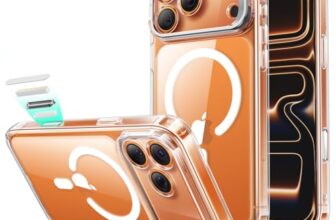A Deep Technical Analysis of the Bose SoundLink Micro Portable Speaker (2nd Gen)
The market for ultra-portable Bluetooth speakers is governed by a fundamental set of engineering compromises. The laws of physics dictate a direct correlation between enclosure volume and low-frequency audio reproduction, while durability often comes at the cost of increased weight and material bulk. Consumers have historically been forced to choose between audio fidelity, portability, and ruggedness. The Bose SoundLink Micro (2nd Gen) enters this competitive landscape as an ambitious attempt to defy these conventions. It presents itself not as a product of compromise, but as a testament to advanced acoustic engineering, materials science, and intelligent power management. This review is a comprehensive technical deconstruction of the SoundLink Micro (2nd Gen). We will move beyond subjective listening impressions to analyze the core technologies that enable its performance. We will examine its acoustic architecture, dissect its IP67 rating, evaluate its power system, and probe the capabilities of its software ecosystem to provide a definitive engineering verdict on its position as a top-tier micro-portable speaker for 2025.
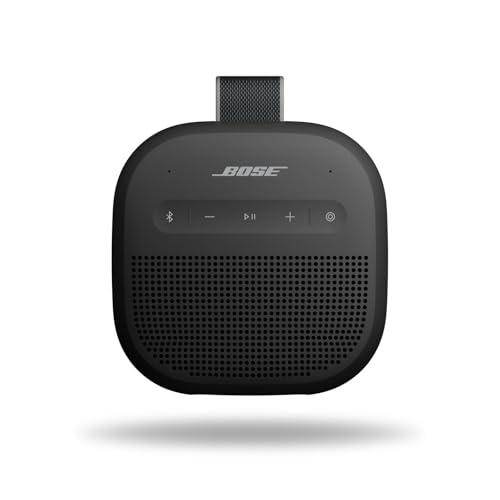
In-Depth Technical Feature Deconstruction
To fully appreciate the engineering of the SoundLink Micro, we must analyze each of its core features not as a marketing point, but as a system of integrated technologies. This section provides a granular breakdown.
1. Acoustic Architecture: Analysis of the “Surprisingly Powerful Sound”
The most significant engineering challenge in a speaker of this form factor is producing a full-range, dynamic sound with perceptible bass. The SoundLink Micro achieves this through a multi-faceted acoustic design. The core of the system is a custom-designed, high-excursion transducer. This active driver is engineered to move a significant amount of air relative to its small diameter, which is the primary mechanism for sound generation. However, a single small driver cannot efficiently reproduce low-frequency sound waves on its own due to physical limitations. To overcome this, Bose integrates dual opposing passive radiators. These are not speakers in the traditional sense; they are diaphragms that are not electrically driven but vibrate in sympathy with the air pressure changes created inside the sealed enclosure by the active driver. This design allows the system to move more air at low frequencies than the active driver could alone, effectively tuning the enclosure to produce deep, rich bass notes that belie the speaker’s physical size. This entire process is managed by a sophisticated Digital Signal Processing (DSP) engine. The Bose proprietary DSP acts as the brain of the audio system, performing several critical functions in real-time. It actively monitors the audio signal and adjusts the equalization (EQ) to maintain a balanced, natural tonal quality at all volume levels. Crucially, it implements dynamic range control algorithms that prevent the transducer from being overdriven at high volumes, eliminating audible distortion and protecting the hardware from damage. This active, intelligent management is the key to producing sound that is both loud and clear from such a compact device.
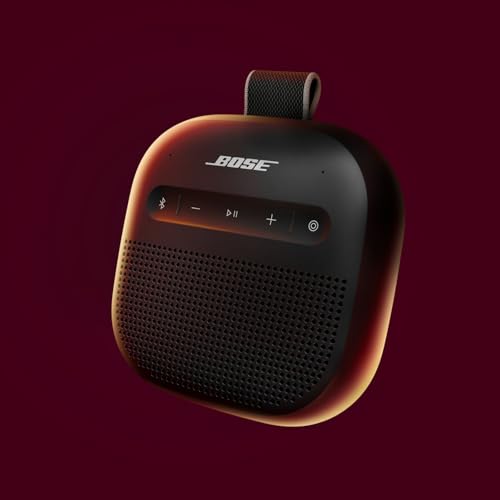
2. Mechanical Design and Material Science: Portability and Durability
The external design of the SoundLink Micro is a study in functional material science, balancing extreme portability with comprehensive environmental resistance.
- Ergonomics and the Utility Strap: The speaker’s “ultra-portable” nature is defined by more than just its pocketable dimensions. Its most significant ergonomic feature is the integrated utility strap. This is not a simple fabric loop but a tear-resistant silicone strap with a secure locking mechanism. From a materials perspective, silicone is an ideal choice due to its high tensile strength, elasticity, and resistance to UV degradation and temperature extremes. This allows the strap to be repeatedly stretched and secured without fatiguing or failing. Its design enables the speaker to be attached to a vast array of objects—bicycle handlebars, backpack straps, tent poles, belt loops—transforming it from a device you simply carry to one that integrates with your other gear.
- Environmental Sealing (IP67 Rating): The Ingress Protection rating of IP67 is a certified standard, not a marketing claim. The ‘6’ signifies that the enclosure is completely sealed against the ingress of solid particles, making it fully dust-tight. This is achieved through precision-molded seals and the absence of gaps in the external chassis. The ‘7’ signifies its water-resistance capability: the device is certified to withstand submersion in water up to 1 meter deep for a duration of 30 minutes. This level of protection is achieved by creating a “sealed chassis” where all sensitive electronic components are housed in a fully waterproof compartment. The external materials, primarily the soft-touch silicone exterior, are hydrophobic and shed water easily.
- Structural Integrity and Resistance: The tiny-but-tough design is built to withstand mechanical shock. The entire exterior is wrapped in a layer of shock-absorbent silicone. This material has a low durometer, meaning it is soft and can deform upon impact, absorbing and dissipating kinetic energy that would otherwise be transferred to the internal components. The claim of rust resistance indicates that any exposed metallic components, such as the speaker grille and any external fasteners, are made from corrosion-resistant materials like stainless steel or are treated with a protective coating to prevent oxidation when exposed to moisture.


3. Power Systems Engineering: 12-Hour Extended Battery Life
The doubling of battery life from 6 to 12 hours in the 2nd generation model represents a significant leap in power systems engineering. This is likely achieved through a combination of three factors. First, an increase in the energy density of the internal Lithium-ion battery, allowing for a higher milliamp-hour (mAh) capacity within the same physical volume. Second, improvements in the power efficiency of the internal components, including a more advanced Bluetooth chipset and a more efficient Class-D amplifier that consumes less power for the same acoustic output. Third, sophisticated power management firmware, likely integrated into the main DSP, which intelligently allocates power and minimizes consumption during idle periods. The 12-hour rating is typically benchmarked at a moderate volume level (around 50-65%). Actual battery performance will vary based on a logarithmic scale with volume; playing at maximum volume will consume power at a much higher rate. The device is charged via a modern USB-C port, which offers the convenience of a reversible connector and potentially faster charging speeds compared to the older Micro-USB standard.
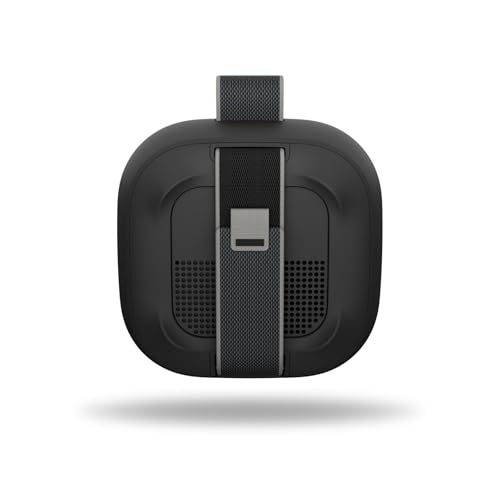
4. Wireless Protocol: Advanced Bluetooth Connectivity
The speaker’s wireless performance is built on an advanced Bluetooth platform, likely Bluetooth 5.0 or higher. This provides several technical advantages over previous generations. The stated range of up to 30 feet (9 meters) is a standard benchmark for Class 2 Bluetooth devices, but stability and reliability within that range are key. Newer Bluetooth versions offer better interference rejection, making the connection more robust in crowded wireless environments. The “increased bandwidth” allows for higher data transfer rates, which can support higher-quality audio codecs for a more detailed sound. The system supports voice prompts for easy pairing and can remember up to eight previously connected devices, seamlessly reconnecting to the most recent one upon power-up, streamlining the user experience.
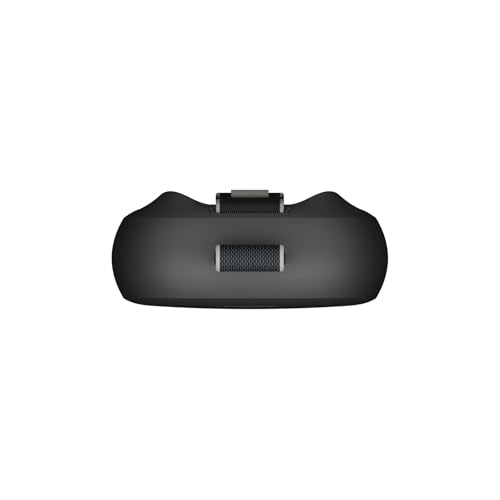
5. Software Ecosystem: The Bose App and Customization
The SoundLink Micro is not just a hardware product; it is part of a larger software ecosystem centered around the Bose app. This app serves as a central control hub and unlocks advanced functionality.
- Adjustable Equalizer (EQ): The ability to adjust EQ is a powerful feature for audio customization. The app provides a three-band equalizer, allowing the user to increase or decrease the gain for bass, midrange, and treble frequencies. This allows the user to tailor the sound signature to their personal preference, the genre of music, or the acoustic environment (e.g., boosting bass outdoors).
- Firmware Updates: The app is the primary vector for delivering firmware updates to the speaker. This is a critical function that allows Bose to improve performance, fix bugs, enhance Bluetooth connectivity, and even add new features to the product over its lifespan.
- Device Management: The app provides an interface for managing Bluetooth connections, renaming the speaker, and creating custom shortcuts for specific functions, adding a layer of personalization to the device’s operation.
6. Multi-Speaker Pairing Technology
The ability to pair two SoundLink Micro speakers together wirelessly unlocks two distinct audio modes, enabled by a proprietary synchronization protocol:
- Stereo Mode: In this mode, the two speakers are designated as left and right channels respectively. This creates a true stereo sound field, with proper spatial imaging and separation. For listeners positioned correctly between the two speakers, this mode provides a much more immersive and authentic audio experience compared to the mono output of a single speaker.
- Party Mode: In this mode, both speakers play the same mono audio signal simultaneously. The purpose of this mode is not stereo imaging but to increase the total acoustic output and coverage area. It is ideal for larger gatherings or outdoor spaces where a wider sound dispersion is more important than stereo separation. The underlying technology must ensure near-perfect synchronization between the speakers to avoid any audible echo or delay effects.
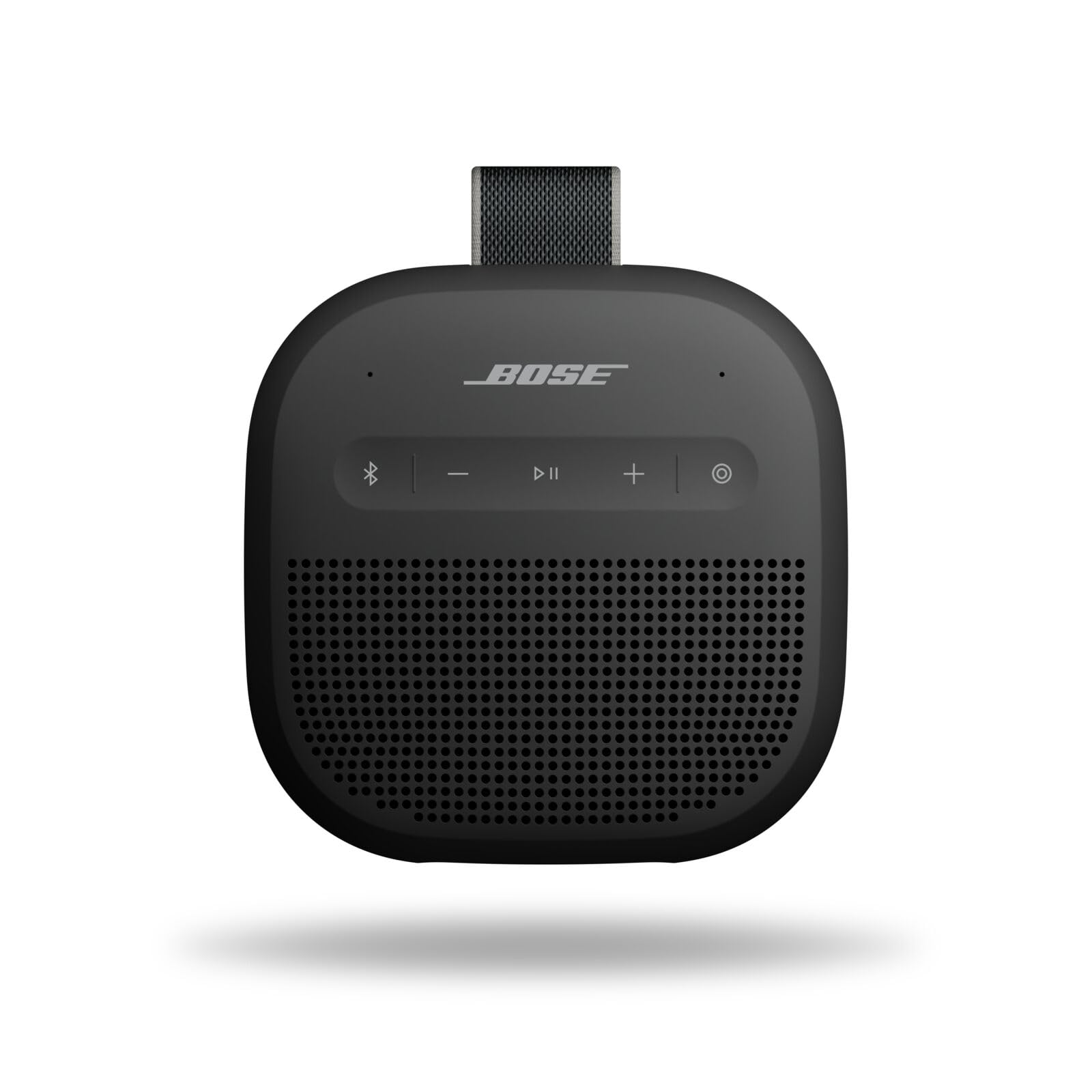
Technical Pros: A Synthesis of Engineering Strengths
- Advanced Acoustic Engineering: The combination of a high-excursion transducer, dual passive radiators, and real-time DSP results in audio quality and bass response that significantly outperform the expectations for its physical volume. The distortion-free output at high volumes is a direct result of this sophisticated engineering.
- Exceptional Durability and Environmental Sealing: The certified IP67 rating and shock-absorbent silicone chassis provide a best-in-class level of protection against dust, water, and impacts. This is a device truly engineered for harsh outdoor environments.
- Superior Power Efficiency: The achievement of a 12-hour battery life in the 2nd generation model demonstrates a significant advancement in both battery technology and the power efficiency of the speaker’s internal components.
- Functional and Secure Portability: The tear-resistant silicone utility strap is a highly effective and versatile mounting solution that fundamentally enhances the speaker’s portability and usability in active scenarios.
- Expandable Software Ecosystem: The Bose app provides valuable customization through EQ controls and ensures the product’s longevity and performance through ongoing firmware updates.
Technical Cons: An Assessment of Inherent Limitations
- Mono Audio Output in Single Unit: By design, a single SoundLink Micro is a mono speaker. While its DSP can create a sense of space, it cannot reproduce a true stereo image. Achieving stereo sound requires the purchase of a second unit.
- Proprietary Pairing Ecosystem: The Party Mode and Stereo Mode functionalities are proprietary to the Bose ecosystem. The speaker cannot be paired with speakers from other brands in a multi-speaker configuration.
- Absence of High-Fidelity Codecs: While functional, the speaker primarily relies on standard Bluetooth codecs (like SBC). There is no support for higher-fidelity codecs such as aptX or LDAC, which may be a limitation for audiophiles streaming from compatible source devices.
- Charging Port Only: The USB-C port is for charging only and does not support audio input. There is also no 3.5mm auxiliary input, meaning connectivity is strictly limited to Bluetooth.
Conclusion: Final Technical Verdict
The Bose SoundLink Micro (2nd Gen) is a masterclass in micro-acoustic and ruggedized electronic design. It systematically addresses and overcomes the traditional compromises of the ultra-portable speaker category. The audio performance, driven by a synergistic combination of custom hardware and intelligent DSP, is exceptional for its size. Its durability is not a superficial feature but a core aspect of its design, certified to the rigorous IP67 standard and reinforced by well-chosen, shock-absorbent materials.
While it has limitations inherent to its form factor and proprietary ecosystem, such as its mono output and lack of wired connectivity, these are deliberate choices made to optimize for its primary use case: delivering high-quality, reliable audio in the most demanding and portable situations. The significant improvements in battery life and the deep functionality provided by the Bose app further solidify its position. For the user seeking a compact speaker that offers no compromise on durability and delivers a surprisingly powerful and clear sound, the Bose SoundLink Micro (2nd Gen) represents a top-tier engineering achievement and stands as a benchmark product in its class for 2025.
Frequently Asked Questions (FAQs)
Q: Can the SoundLink Micro (2nd Gen) connect to two source devices at the same time?
A: Yes, the speaker incorporates Bluetooth multipoint technology. It can maintain an active connection to two devices—such as a smartphone and a laptop—simultaneously. The audio stream management is seamless; if you are playing audio from one device and initiate playback on the second, the speaker will automatically switch sources. Pausing the second device will allow the first to resume. This functionality is handled by the speaker’s internal firmware and provides significant convenience for users who operate within a multi-device ecosystem.
Q: How practical is the IP67 rating? Can I actually use it in the shower or take it to the beach?
A: The IP67 rating is a certified standard that makes the speaker highly practical for wet and dusty environments. The ‘7’ indicates it can be submerged in up to 1 meter of fresh water for 30 minutes, so use in a shower or accidental drops into a pool are well within its operational limits. The ‘6’ indicates it is fully sealed against dust and sand, making it ideal for the beach. However, a key technical recommendation after exposure to saltwater is to rinse the speaker gently with fresh water. This will remove salt deposits that could, over time, potentially corrode the metallic speaker grille, thus ensuring long-term durability.
Q: What is the approximate time for a full charge, and can the speaker play music while charging?
A: The time to achieve a full charge from a depleted state is approximately 3 to 4 hours, depending on the power output of the USB-C charger used (a higher wattage charger may slightly decrease this time). The speaker’s power management system fully supports play-and-charge functionality. You can connect it to a power source and continue to stream audio without interruption, making it suitable for extended listening sessions where battery life might otherwise be a constraint.
Q: Does the SoundLink Micro (2nd Gen) have a built-in microphone for phone calls or voice assistants?
A: Yes, the unit is equipped with an integrated microphone. This allows it to function as a high-quality speakerphone for making and receiving calls directly through the speaker. Furthermore, by pressing and holding the multi-function button, you can activate and interact with your connected smartphone’s default voice assistant, such as Siri or Google Assistant, enabling hands-free control for tasks like sending messages, checking the weather, or controlling smart home devices.
Q: Is it mandatory to use the Bose app to operate the SoundLink Micro?
A: No, the Bose app is not mandatory for core speaker functions. You can pair the speaker via standard Bluetooth settings, play/pause audio, adjust volume, and use the speakerphone features without ever installing the app. However, the app is required to access advanced functionalities such as customizing the Equalizer (EQ) settings, enabling Stereo or Party Mode with a second speaker, managing device connections, and, most importantly, receiving firmware updates that can enhance performance and add new features over the product’s lifespan.
See more posts in the category Speaker.






